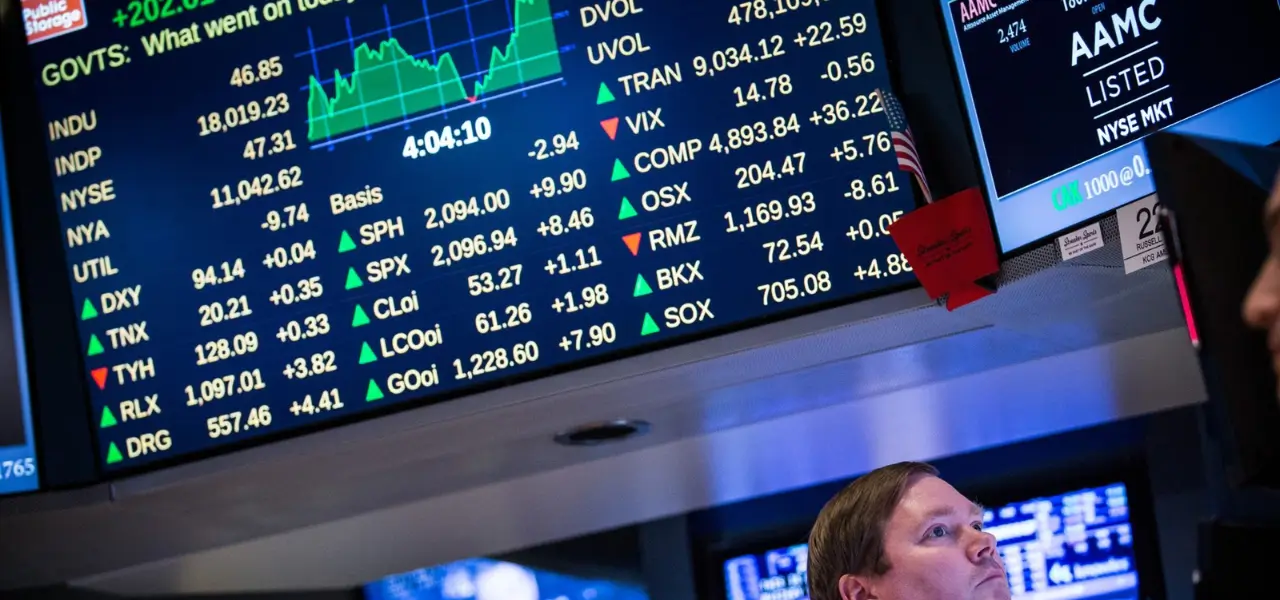Trading days in a year vary by market, but most global exchanges operate between 250-252 trading days annually.
In 2025, the US stock market will have exactly 252 trading days, while India’s NSE operates around 248 trading days, and Australia’s ASX runs approximately 251 trading days. Understanding these numbers helps you plan better trading strategies and maximize your market opportunities.
How Many Trading Days Are Left in 2025?
Trading Days Remaining in 2025
🚨 Upcoming Market Holidays
This real-time calculator shows exactly how many trading days remain in 2025 across major global markets. The tool automatically updates daily and accounts for upcoming holidays and weekend exclusions to provide accurate remaining trading opportunities.
What Are Trading Days?
A trading day represents any weekday when financial markets remain open for buying and selling securities. Unlike calendar days that include all 365 days per year, trading days exclude weekends and official market holidays. This distinction matters significantly for traders, investors, and prop firms planning their annual strategies.
Trading Days vs Calendar Days vs Business Days
Calendar days include every single day in a year (365 or 366 in leap years). Business days typically refer to Monday through Friday, excluding weekends but may include some market holidays. Trading days are more specific – they represent only the days when stock exchanges, futures markets, and other financial markets actively operate.
How Many Trading Days Are in 2025?
2025 trading days vary significantly across global markets due to different holiday schedules and market structures. At Phidias, we track these variations carefully since our futures prop firm operates across multiple international markets with distinct trading calendars.
United States Trading Days 2025 (252 Days)
The US stock market including NYSE, NASDAQ, and CME futures will operate for exactly 252 trading days in 2025. This calculation excludes 104 weekend days and 9 major federal holidays. American futures markets, which we focus on at Phidias, follow this same calendar structure and benefit from extended trading sessions as detailed in our comprehensive futures market hours guide.
US market holidays in 2025:
- New Year’s Day (January 1)
- Martin Luther King Jr. Day (January 20)
- Presidents’ Day (February 17)
- Good Friday (April 18)
- Memorial Day (May 26)
- Juneteenth (June 19)
- Independence Day (July 4)
- Labor Day (September 1)
- Thanksgiving Day (November 27)
- Christmas Day (December 25)
European Markets Trading Days 2025
European trading days in 2025 range from 251-253 days depending on the specific exchange. The London Stock Exchange (LSE) operates approximately 252 trading days, while Euronext and German DAX follow similar patterns with slight variations for local holidays.
European markets generally observe Good Friday, Christmas, and New Year’s Day, but each country adds its own national holidays. This creates opportunities for cross-market arbitrage and affects international futures trading strategies.
Asia-Pacific Trading Days 2025
Asian markets show the most variation in annual trading days, ranging from 245-251 days depending on cultural and religious observances. At Phidias, we monitor these differences since they impact global futures market liquidity and trading opportunities.
India NSE Trading Days 2025 (Around 248 Days)
India’s National Stock Exchange (NSE) and Bombay Stock Exchange (BSE) operate approximately 248 trading days in 2025. Indian markets close for numerous festivals including Diwali, Holi, Eid, and regional celebrations, resulting in fewer annual trading days compared to Western markets.
Key Indian market holidays include Mahashivratri, Holi, Ram Navami, Mahavir Jayanti, Good Friday, Eid ul-Fitr, Independence Day, Ganesh Chaturthi, Dussehra, Diwali, and Christmas. These religious and cultural holidays significantly impact NSE trading days throughout the year.
Australia ASX Trading Days 2025 (Around 251 Days)
Australia’s ASX operates approximately 251 trading days in 2025, similar to most Western exchanges. Australian market holidays include New Year’s Day, Australia Day, Good Friday, Easter Monday, Anzac Day, Queen’s Birthday, Christmas Day, and Boxing Day.
ASX trading hours (10:00 AM – 4:00 PM AEST) align well with Asian market sessions, creating opportunities for futures traders to capitalize on overlapping market hours and increased liquidity.
Other Asian Markets (Japan, Hong Kong, Singapore)
Japanese markets operate around 245 trading days due to numerous national holidays including Golden Week. Hong Kong markets run approximately 246 trading days, while Singapore operates about 250 trading days annually.
Month-by-Month Breakdown for 2025
Monthly trading days in 2025 vary between 20-23 days depending on holiday placement and weekend distribution. January typically has 20 trading days, while months without holidays often reach 22-23 trading days.
High trading day months: March, April, May, June, August, October typically offer 22-23 trading days. Lower trading day months: January, July, November, December usually provide 19-21 trading days due to holiday clusters.
How Many Trading Days in a Month?
Monthly trading days typically range from 20-22 days, representing roughly 80-88% of all calendar days in a month. This consistency helps traders plan monthly strategies and performance expectations.
Factors affecting monthly variation include holiday timing, weekend placement, and leap year adjustments. February consistently offers the fewest trading opportunities due to its shorter length, while months like March and October often provide maximum trading days.
Factors Affecting Monthly Trading Days
Holiday clustering during certain months significantly impacts available trading days. December sees reduced activity due to Christmas and New Year proximity, while July experiences Independence Day effects in US markets.
Weekend positioning also affects monthly totals – when holidays fall on weekends, observed holidays shift to weekdays, reducing actual trading days. Leap years add one extra day but don’t always translate to additional trading opportunities.
Different Markets, Different Trading Schedules
Market types operate on vastly different trading schedules, creating unique opportunities and challenges for traders. Understanding these differences helps optimize trading strategies across multiple asset classes.
Futures Markets Trading Days (Phidias Focus)
Futures trading days generally follow stock market calendars but with important exceptions. CME Group, ICE, and Eurex futures operate 252 days annually in US markets, aligning with equity market schedules.
At Phidias, we specialize in futures prop trading across these major exchanges. Futures markets offer extended trading hours and nearly 24-hour access during weekdays, providing more trading opportunities than traditional stock markets. For traders new to this asset class, our comprehensive futures trading guide explains how these markets work and why they’re attractive for professional trading.
Forex Market Trading Days (252 Days)
Forex markets operate 24 hours daily from Monday through Friday, totaling 252 trading days annually. Currency trading never stops during weekdays due to overlapping global sessions in London, New York, Tokyo, and Sydney.
FX trading availability exceeds stock market hours significantly, offering 120+ hours of weekly trading opportunities compared to 32.5 hours for US equity markets. This extended access appeals to global traders seeking flexible schedules. For those considering different markets, our detailed comparison of futures vs forex trading highlights the advantages of each approach.
Cryptocurrency Market (365 Days)
Cryptocurrency markets operate 365 days annually with 24/7 trading availability. Bitcoin, Ethereum, and other digital assets trade continuously without weekend breaks or holiday closures.
Crypto trading offers maximum market access but requires different risk management approaches due to constant price movements and lack of traditional market closures. Liquidity patterns vary significantly during weekends and holidays.
Impact of Trading Days on Trading Strategies
Annual trading days directly influence strategy development, performance measurement, and risk management decisions. Professional traders and prop firms structure their approaches around available market time.
Strategy timing becomes important when trading days cluster or spread unevenly throughout the year. Seasonal patterns, holiday effects, and reduced liquidity periods all require tactical adjustments to maintain consistent performance.
Prop Firm Trading and Calendar Planning
Prop firm evaluations and challenge periods align with trading day availability to ensure fair assessment conditions. At Phidias, we structure our evaluation periods around standard trading calendars to provide consistent opportunities for all traders.
Funded account requirements often specify minimum trading days between payout requests, making trading calendar knowledge important for cash flow planning and strategy execution. Challenge completion times also depend on available trading days. For traders preparing for evaluations, our detailed prop firm challenge guide provides strategies for maximizing performance during assessment periods.
Best Trading Days and Timing
Tuesday through Thursday historically offer the highest liquidity and most consistent market behavior. Monday markets often experience weekend gap effects, while Friday trading may show position unwinding before weekends.
Seasonal trading patterns suggest strong performance during November-April periods and more challenging conditions during summer months. These patterns help long-term strategy planning and risk adjustment.
Holiday Impact on Global Trading Days
Market holidays create both challenges and opportunities for traders. Reduced liquidity during holiday periods can increase volatility while extended weekends may cause gap openings when markets resume.
International holiday differences allow cross-market arbitrage opportunities when some exchanges operate while others remain closed. Global futures traders particularly benefit from understanding these calendar variations.
US Market Holidays 2025
Federal holidays affecting US trading include both fixed dates (Christmas, Independence Day) and floating holidays (Memorial Day, Labor Day) that shift annually. Good Friday represents a notable exception as a non-federal holiday that closes financial markets.
Early market closures occur on days preceding major holidays – typically 1:00 PM ET closes on Thanksgiving Friday, Christmas Eve, and New Year’s Eve when they fall on trading days.
International Market Holidays
Global market holidays vary dramatically by cultural, religious, and national factors. Chinese New Year, Diwali, Ramadan, and Golden Week create significant trading disruptions in their respective regions while providing opportunities in unaffected markets.
European holiday coordination through TARGET2 system helps synchronize major financial centers, but individual country holidays still create localized market closures throughout the year.
Planning Your Trading Year with Phidias
Trading year optimization requires understanding market availability, seasonal patterns, and personal trading goals. At Phidias, we help traders develop comprehensive annual plans that maximize available trading opportunities.
Strategic calendar planning involves identifying high-opportunity periods, avoiding challenging market conditions, and structuring goals around realistic trading day expectations. Performance tracking improves when aligned with actual market availability. Understanding how professional prop firms operate can significantly enhance your trading approach – learn more about how prop firms work to leverage institutional resources for your trading career.
Maximizing Your Trading Days
Efficiency optimization focuses on quality over quantity – successful traders prioritize high-probability setups over maximum trading frequency. Selective trade entry during optimal market conditions often outperforms constant market participation.
Pre-market preparation and post-market analysis extend productive trading time beyond official market hours. Education, strategy development, and market research continue during non-trading periods to improve overall performance. Professional traders also benefit from using advanced platforms and tools – our guide to the best futures trading platforms can help you optimize your setup for maximum efficiency.
Whether you’re just starting out or looking to scale your trading operation, Phidias offers multiple account options designed to match your experience level and trading goals. Our flexible evaluation system works around the standard trading calendar to give every trader a fair opportunity to demonstrate their skills.
Frequently Asked Questions
Are there exactly 252 trading days every year? No, annual trading days vary between 250-253 depending on holiday placement and leap years. 2025 offers 252 trading days in US markets, but this number changes annually.
Do all global markets have the same number of trading days? No, international markets range from 245-253 trading days due to different cultural holidays, religious observances, and national celebrations. Asian markets generally have fewer trading days than Western exchanges.
How do leap years affect trading days? Leap years add one calendar day but may not increase trading days if the extra day falls on a weekend or existing holiday. The impact varies by holiday placement and weekend distribution.
What happens when holidays fall on weekends? Weekend holidays typically shift to adjacent weekdays as observed holidays, reducing actual trading days. Christmas on Saturday becomes Friday observed, closing markets for extended weekends.
How do prop firms count trading days for evaluations? Prop firms like Phidias typically require actual trading activity on specified trading days rather than calendar days. Evaluation periods align with market availability to ensure fair assessment conditions. For specific requirements and details about our evaluation process, please review our comprehensive trading rules which outline all requirements for challenge accounts and funded trading.







